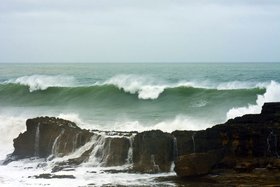ROCSTAR
Resolving Ocean heat Content changes by combining Space gravimeTry, Argo and Radar altimetry
Description and research goals:
Changes in the ocean heat are strongly linked to the heat flux at the ocean-atmosphere boundary and therefore play a major role in modulating the Earth’s climate. The ocean acts as a giant heat battery and stores excess heat from the atmosphere. The heat transfer in or out of the ocean modulates the Earth's climate through various mechanisms and is therefore a crucial quantity to observe. A warmer ocean means more potential for evaporation and can thus affect precipitation patterns. The absorption of heat causes the ocean column to expand and to contribute to sea level rise, and the non-uniform density changes may also cause circulation changes.
Significant uncertainties still exist in in-situ derived estimates of ocean heat content and certain regions of the ocean are still poorly sampled. The ROCSTAR project will provide new insights in the Earth’s energy budget, sea level change, and its link with precipitation from an observational viewpoint. The aim is to improve oceanic temperature and salinity estimates, together with sea surface changes and ocean bottom pressure. This is accomplished by combining space geodetic data (satellite gravimetry and satellite radar altimetry) together with Argo profiles.The resulting estimates cover the entire ocean column, and the associated steric (volumetric) changes will be consistent with both observed ocean bottom pressure and sea level anomalies. In light of this, the project aims to tackle among others also following technical issues:
- Increase the accuracy and consistency of temperature and salinity fields and provide corresponding realistic error estimates
- Extend the temperature and salinity estimates to sparsely sampled regions and the deep and abyssal ocean
These results will be used to answer scientific questions such as:
- To what extent is regional sea level in South East Asia driven by (thermo and halo) steric changes?
- What relative role do the shallow and deep layers of the ocean play in the Earth’s energy and sea level budget?
- Are there oceanic hotspots which are linked the terrestrial water cycle in South-East Asia?

